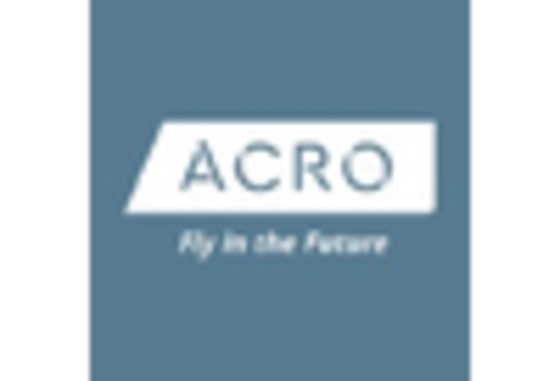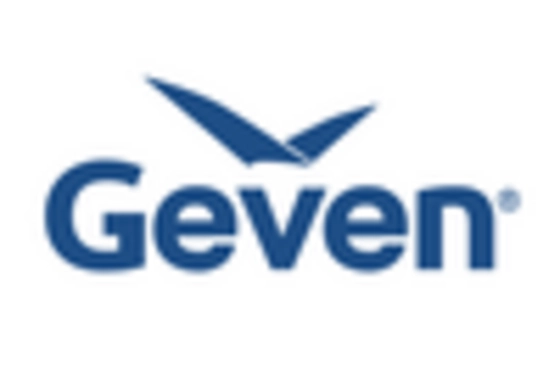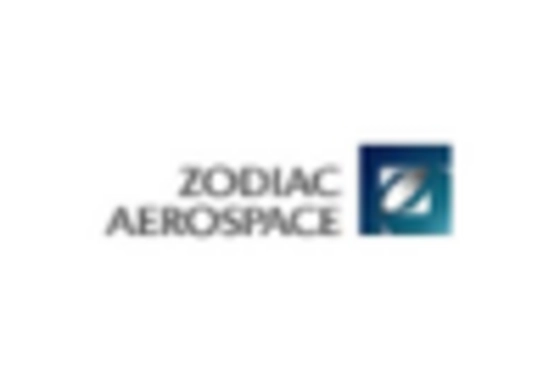Rising Demand for Air Travel
The Aircraft Seat Upholstery Market is experiencing a notable surge in demand, driven by the increasing number of air travelers. As more individuals opt for air travel, airlines are compelled to enhance passenger comfort and experience. This has led to a greater focus on high-quality upholstery materials that not only provide comfort but also meet safety regulations. According to industry estimates, the number of air passengers is projected to reach 8.2 billion by 2037, indicating a robust growth trajectory. Consequently, airlines are investing in upgrading their fleets, which includes refurbishing existing aircraft with modern upholstery solutions. This trend is likely to propel the Aircraft Seat Upholstery Market forward, as airlines seek to differentiate themselves through superior passenger experiences.
Customization Trends in Aircraft Interiors
Customization is emerging as a prominent trend within the Aircraft Seat Upholstery Market. Airlines are increasingly recognizing the importance of personalized passenger experiences, leading to a demand for bespoke upholstery solutions. This trend is driven by the desire to create unique cabin environments that reflect the airline's brand identity. Custom upholstery options, including color schemes, textures, and patterns, are becoming more prevalent as airlines seek to differentiate themselves in a competitive market. Additionally, the rise of premium economy and business class offerings has further fueled the need for tailored upholstery solutions that enhance comfort and luxury. As a result, the Aircraft Seat Upholstery Market is likely to witness a growing emphasis on customization, allowing airlines to cater to diverse passenger preferences.
Regulatory Compliance and Safety Standards
The Aircraft Seat Upholstery Market is significantly influenced by stringent regulatory compliance and safety standards. Airlines are mandated to adhere to various safety regulations concerning materials used in aircraft interiors, including upholstery. These regulations ensure that materials are fire-resistant, durable, and safe for passenger use. As a result, manufacturers are compelled to innovate and develop upholstery solutions that meet these rigorous standards. The increasing focus on passenger safety is driving demand for high-quality upholstery materials that comply with international regulations. Furthermore, as regulatory bodies continue to update safety standards, the Aircraft Seat Upholstery Market is likely to experience ongoing pressure to adapt and enhance product offerings, ensuring that they align with the latest safety requirements.
Focus on Sustainability and Eco-Friendly Materials
Sustainability is becoming a pivotal concern within the Aircraft Seat Upholstery Market. Airlines and manufacturers are increasingly prioritizing eco-friendly materials in response to growing environmental awareness among consumers. The use of recycled and biodegradable materials is gaining popularity, as stakeholders aim to reduce their carbon footprint. This shift is not only beneficial for the environment but also aligns with regulatory pressures to adopt sustainable practices. Reports indicate that the market for sustainable aviation materials is expected to grow significantly, with upholstery being a key segment. As a result, the Aircraft Seat Upholstery Market is likely to see a rise in demand for sustainable upholstery solutions, as airlines seek to enhance their brand image and appeal to environmentally conscious travelers.
Technological Advancements in Upholstery Materials
Innovations in upholstery materials are significantly influencing the Aircraft Seat Upholstery Market. The introduction of advanced textiles, such as lightweight composites and antimicrobial fabrics, is enhancing the durability and hygiene of aircraft seating. These materials not only improve the aesthetic appeal of the interiors but also contribute to weight reduction, which is crucial for fuel efficiency. The market is witnessing a shift towards materials that are easier to clean and maintain, aligning with the growing emphasis on passenger health and safety. Furthermore, the integration of smart textiles that can adapt to temperature and moisture levels is gaining traction. This technological evolution is expected to drive the Aircraft Seat Upholstery Market, as manufacturers and airlines prioritize innovative solutions to meet evolving consumer expectations.


















Leave a Comment